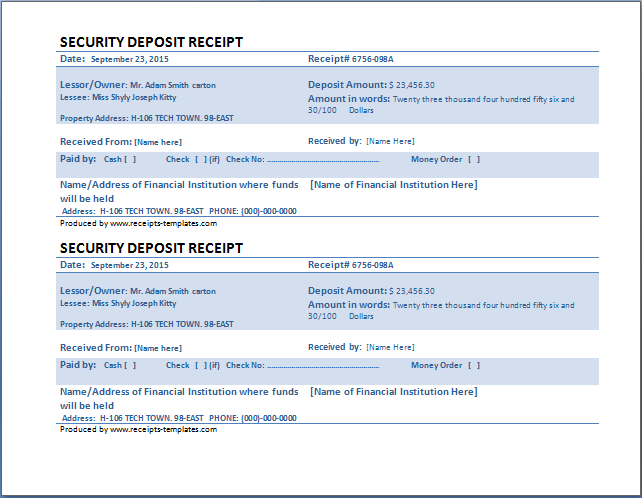

In a democratic set up direct methods are not accepted, the states have to play an active and essential role. The government thus uses the powerful tool of fiscal policy to achieve its goal of development, maintaining healthy employment opportunities, economic stability and ensure permanency in growth. When the contractionary policy is implemented, it slows down inflation, taxes are raised, and the growth of businesses is slowed down. Contractionary fiscal policy may also lead to the total death of new businesses which cannot keep up with the current economic events. As more money flows into an economy and taxes reduce, businesses get the opportunity to hire more people. Therefore, this will lead to a low unemployment rate, which may arise, and a rise in living standards while reducing poverty levels.
We use alternative sourced information to increase awareness of crucial issues. Our goal is to help neutralize the corporate media’s dominance over our nation’s collective consciousness & promote critical thinking. It is reactionary to the ever-changing economic conditions a community faces. Fiscal policy in the United States is directed by both the executive and legislative branches.
An Overview of Monetary Policy
Once a rustic’s financial system recovers, its authorities should increase taxes and reduce spending to pay off the growth. The reason Consumers may prefer to save more to anticipate further economic downturn rather than spending on goods and services. Monetary and fiscal policy tools are used in concert to help keep economic growth stable with low inflation, low unemployment, and stable prices. Unfortunately, there is no silver bullet or generic strategy that can be implemented as both sets of policy tools carry with them their own pros and cons.
- This kind of policy is set when the government is spending more than the taxes collected.
- Local governments often need to depend on their respective provinces for some funding because they don’t have the means to generate enough revenue from taxes or other sources like property taxes.
- Although there can be some lag time in this process to see results, you will still see forward progress happen almost immediately.
- Economist John Maynard Keynes, a British economist in the 1800s and the 1900s, stated that governments should be able to influence their economy to offset the contraction and expansion of the economy.
First, the public sectors of most developed economies normally employ a significant proportion of the population, and they are usually responsible for a significant proportion of spending in an economy. Second, governments are also the largest borrowers in world debt markets. The government can decide to increase or decrease fiscal stimulus if they want to stimulate the economy or if they want to reduce inflation. Along with spending and tax policy, governments can use their sovereignty to profit from printing money and selling goods as public enterprises in order to change the effects. When expansion leads to deficits, as it usually does, contractionary fiscal policy is characterized by a large budget surplus. It is considered neutral when it is neither expansionary nor contractionary.
Since the economic effects of this deficit include increased public debt, the country can pursue contraction in its fiscal policy. It will, therefore, reduce public spending and increase tax rates to raise more revenue and ultimately lower the budget deficit. Monetary policy involves the management of the money supply and interest rates by central banks. To stimulate a faltering economy, the central bank will cut interest rates, making it less expensive to borrow while increasing the money supply. If the economy is growing too rapidly, the central bank can implement a tightmonetary policy by raising interest rates and removing money from circulation.
However, in a low-employment economy, this demand will lead to more employment and production but not necessarily price variation. The concept still allows the use of discretionary fiscal policy to achieve that. One of the most critical limitations of discretionary fiscal policy is the time required to see its impact. Usually, governments use this policy and wait for it to create positive economic growth. The term originates from the work of John Maynard Keynes through his Keynesian economics theories. Similarly, fiscal policies can influence various areas within the economy.
Fiscal policy refers to the tools used by governments to change levels of taxation and spending to influence the economy. Central banks have the capacity to act quickly when they sense there is an issue with the monetary policy. Their toolbox is filled with options that can be implemented on a moment’s notice sometimes. Even if there is only a signal from the central banks that indicates an action on the monetary policy will occur, the stock market will respond as if the actions were taken. Contractionary fiscal policy involves lowering authorities spending, growing taxes, or a mixture of the 2 so as to decrease combination demand and sluggish economic progress to scale back inflation.
Usually, as the economy fluctuates through periods of expansion and contraction, the economic condition also changes. His theories were developed in response to the Great Depression, which defied classical economics’ assumptions that economic swings were self-correcting. Keynes’ ideas were highly influential and led to the New Deal in the U.S., which involved massive spending on public works projects and social welfare programs. To fulfill one of its major objectives of providing full employment, allocation of huge amount has been made in fiscal policy to eradicate poverty and generate employment. For this a huge amount has been spent on different schemes like twenty point programme, Integrated Rural Development Programme , Jawahar Rpzgar Yojana etc. If the multiplier effect is large, then changes in government spending will have a bigger effect on overall demand.
fiscal policy
Instead, the relief package ran out with the coronavirus still rampant. In the United States, the Federal Reserve has powerful influence over interest rates. Procyclical policy works with the business cycle, blowing cold when the economy advantages of fiscal policy is cooling, hot when it’s warming up. Recessions and durations of high inflation are troublesome economic situations. The offers that appear in this table are from partnerships from which Investopedia receives compensation.
This is done to mitigate and reduce the cost of production in that period and maximize profits. Central banks can use the monetary policy to weaken the overall currency value on the global stage. This process occurs when there are lower interest rates or an increase to the money supply. When a currency receives devaluing on the global market, then the action serves to boost exports because the goods and services provided domestically are cheaper to purchase internationally. For example, if the government pursue expansionary fiscal policy, but interest rates rise, and the global economy is in a recession, it may be insufficient to boost demand. In response to a deep recession (GDP fell 6%) the government cut VAT in a bid to boost consumer spending.

In the rural areas attempts can be made to encourage domestic industries by providing them training, cheap finance, equipment and marketing facilities. Expenditure on all these measures will help in eradicating unemployment and under-employment. Taxation policy is used to reduce undesirable consumption in developed countries. By setting up various projects in underdeveloped areas the government facilitates balanced development in the country. Likewise, in the case of the decrease in prices, the government can purchase commodities at minimum support price or it can provide the subsidy to buyers. Similarly, it helps the economy grow by raising the value of goods and services produced.
In nut shell, fiscal policy should be viewed from a larger perspective keeping in view the balanced growth of various sectors of the economy. Thus, well-planned fiscal programme, public expenditure can help development of human capital which in turn possesses positive effects on income distribution. Regional disparities can also be removed by providing incentives to backward regions. A redistributive tax policy should be highly progressive and aim at imposing heavy taxation on the richer and exempting poorer sections of the community.
Keynes argued that governments could stabilize the business cycle and regulate economic output rather than let markets right themselves alone. In India, the Monetary Policy is beneath the Reserve Bank of India or RBI. If he spends it, he will increase demand and companies have to produce more.
Learn what fiscal policy is, how it affects the national economy and how it impacts small businesses.
It is a term used to talk about the taxing and spending policies of a specific government at the local, regional, or national level. It’s a lot like having a personal budget which you follow, except instead of saving for the future, the government is supporting the public needs and social services the community requires. Here are some key points in the pros and cons of fiscal policy setting to consider. Fiscal policy is a macroeconomic policy to influence the economy by using budgetary instruments such as taxes and government expenditure.
IIM Calcutta Executive Programme in Investment Banking and Capital Markets
Deflationary Fiscal Policy – impact on the economy of raising taxes and cutting spending. Tight fiscal policy will tend to cause an improvement in the government budget deficit. Increasing the money supply or lowering interest rates tends to devalue the local currency. Aweaker currencyon world markets can serve to boost exports as these products are effectively less expensive for foreigners to purchase. The opposite effect would happen for companies that are mainly importers, hurting their bottom line. While central banks can be effective, there could be negative long-term consequences that stem from short-term fixes enacted in the present.
Governments can collect funds from various sources to finance these policies. However, they may also involve borrowing, selling assets, seigniorage, etc. On top of that, the state of the global economy also influences those conditions. When the economy slows down, the government tries to boost growth; when the economy is hot, the government tries to cool it off to avoid inflation. Adam Hayes, Ph.D., CFA, is a financial writer with 15+ years Wall Street experience as a derivatives trader. Besides his extensive derivative trading expertise, Adam is an expert in economics and behavioral finance.
A government can use this tool to boost aggregate demand in the economy. The total demand for all goods and services in a given country is known as aggregate demand. The decision to spend money can be influenced by both political and economic factors.

